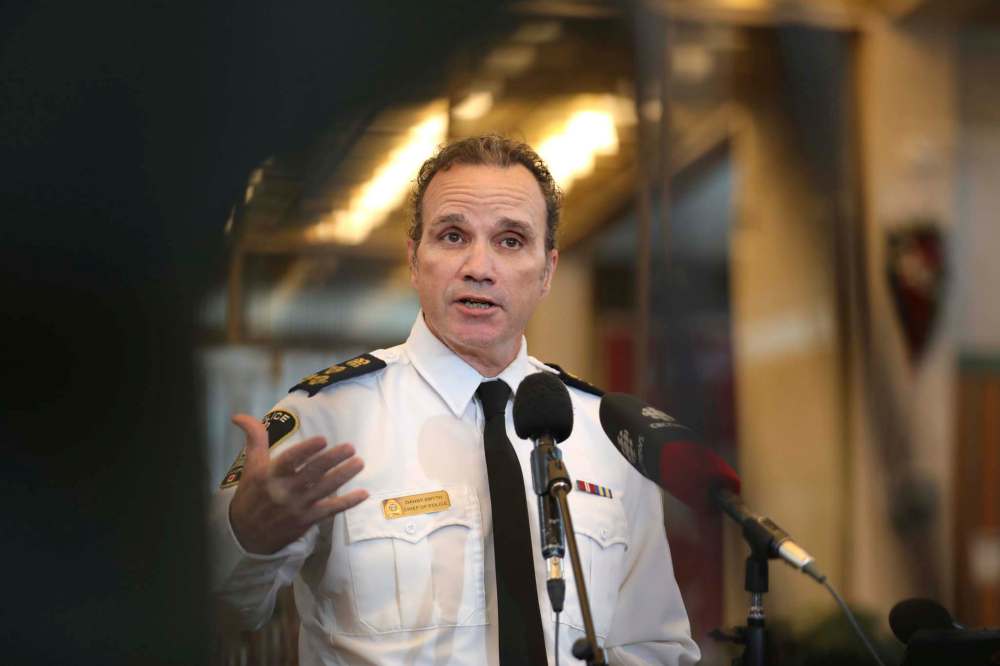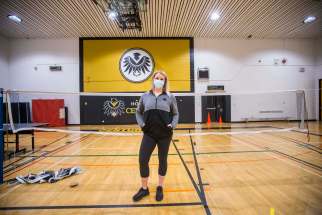Include body cameras in WPS budget plans
Read this article for free:
or
Already have an account? Log in here »
To continue reading, please subscribe:
Monthly Digital Subscription
$0 for the first 4 weeks*
- Enjoy unlimited reading on winnipegfreepress.com
- Read the E-Edition, our digital replica newspaper
- Access News Break, our award-winning app
- Play interactive puzzles
*No charge for 4 weeks then price increases to the regular rate of $19.00 plus GST every four weeks. Offer available to new and qualified returning subscribers only. Cancel any time.
Monthly Digital Subscription
$4.75/week*
- Enjoy unlimited reading on winnipegfreepress.com
- Read the E-Edition, our digital replica newspaper
- Access News Break, our award-winning app
- Play interactive puzzles
*Billed as $19 plus GST every four weeks. Cancel any time.
To continue reading, please subscribe:
Add Free Press access to your Brandon Sun subscription for only an additional
$1 for the first 4 weeks*
*Your next subscription payment will increase by $1.00 and you will be charged $16.99 plus GST for four weeks. After four weeks, your payment will increase to $23.99 plus GST every four weeks.
Read unlimited articles for free today:
or
Already have an account? Log in here »
Hey there, time traveller!
This article was published 30/03/2021 (1718 days ago), so information in it may no longer be current.
To understand how body cameras can improve policing, picture a domestic disturbance, a call for help that Winnipeg police attend an average of 44 times a day. Body cameras affixed to arriving officers record the immediate details of the conflict, such as injuries and witness statements, while the clash is still fresh and accounts are more likely to be accurate. If the officers are later accused of racism or unnecessary violence, data from the cameras are available.
Such outcomes will be possible if Winnipeg Police Service Chief Danny Smyth gets his way. Winnipeg Police Board chair Markus Chambers asked Smyth last Friday to explore the idea, and the chief said he will prepare a pitch that will be part of the city’s 2022 budget talks.
It would be unrealistic to tout body cameras as a magic-wand solution to the considerable problems that currently plague relations between Winnipeg police and some demographic groups, particularly citizens who are Indigenous or Black.

The use of such cameras has been well researched, including major studies — one by the University of Toronto, another out of Washington, D.C. — that evaluated experiments in dozens of police jurisdictions. They found police didn’t change their use-of-force strategies when they knew their actions were being recorded, so violent incidents didn’t decrease.
But more encouragingly, some studies found the cameras make police accountabililty more transparent. Video evidence can provide a relatively objective account in disputes between arresting officers and citizens who say they were abused physically or verbally. Such evidence would be welcome in cases that go to court or to Manitoba’s Independent Investigation Unit.
Body cameras can also be valuable as a training tool to help police analyze potential problems during interactions with citizens. In the same way professional athletes study game film, officers with access to body-camera footage can unpack troubling encounters and think of ways to improve.
It’s not the first time police body cameras have been promoted in Winnipeg. Coun. Kevin Klein tried last September to raise the issue, but his proposal didn’t make it past the committee stage. A pilot project was promised in 2015 and then scrapped a year later for budget reasons.
The push is more important this time around, however, because public trust in Winnipeg police seems to have hit rock bottom. Local protests last summer against police brutality attracted thousands of people, and about 63,000 people have signed a petition to defund and abolish the Winnipeg Police Service.
It’s not the first time police body cameras have been promoted in Winnipeg. Coun. Kevin Klein tried last September to raise the issue, but his proposal didn’t make it past the committee stage. A pilot project was promised in 2015 and then scrapped a year later for budget reasons.
This lack of public confidence is partly because the IIU, which was initiated in 2015 to improve accountability, has turned out to be a weak watchdog, with only 23 of 81 accused officers fully co-operating with the body’s investigations.
Improved IIU oversight is another way in which body cameras can help. Even if officers continue to stand on their right to decline to speak to the IIU, video from their mandatory cameras would be available.
The stumbling block to outfitting WPS officers with the cameras is expected to be the cost. Last year, police estimated such a system could cost up to $10 million to implement for roughly 1,350 officers, although other cities have found systems that are less expensive.
What’s more alarming than the pricetag, however, is the cost of doing nothing. Only 34 per cent of Manitobans “strongly trust” police, according to a Statistics Canada survey last November.
Council should approve a pilot project to test the cameras. They’re not a quick fix, but they can be a useful diagnostic tool to identify policing problems, a necessary step toward restoring trust in the WPS badge.





